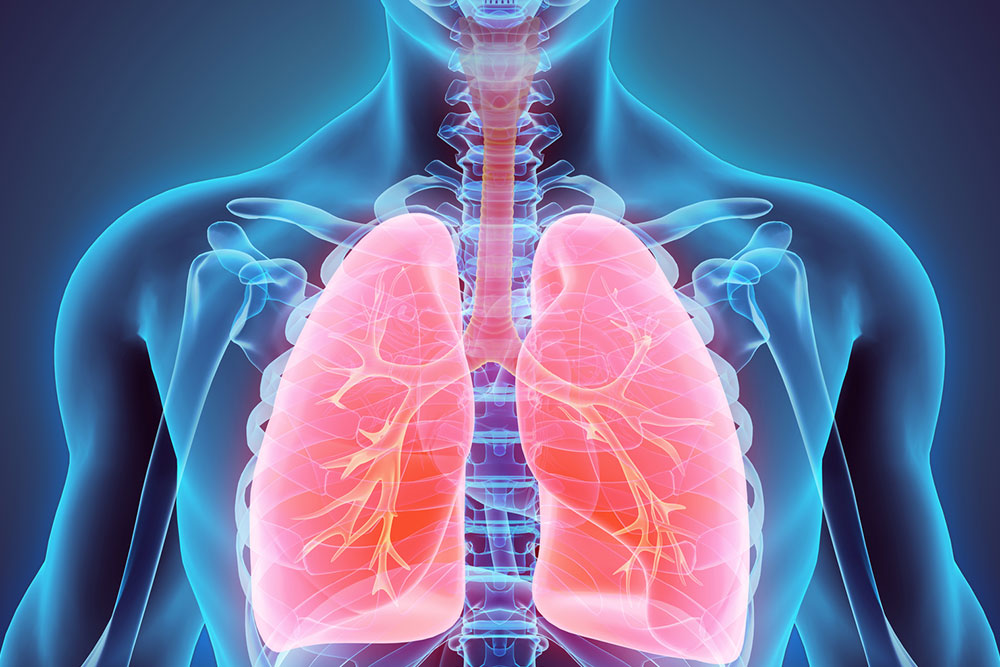Comprehensive Guide to Recognizing and Managing Common Respiratory Disorders
This comprehensive guide explores common respiratory disorders, their symptoms, and management strategies. Recognizing warning signs like persistent cough, breathing difficulties, and chest pain is vital for early intervention. The article covers prevalent conditions such as asthma, COPD, pneumonia, TB, lung cancer, and cystic fibrosis, highlighting the importance of timely diagnosis and treatment. Emphasizing prevention and lifestyle modifications, this piece aims to enhance awareness and promote respiratory health, ultimately helping individuals seek medical help sooner and improve their quality of life.

Comprehensive Guide to Recognizing and Managing Common Respiratory Disorders
Respiratory health is a crucial aspect of overall well-being, yet many individuals overlook persistent respiratory symptoms, dismissing them as minor or temporary. However, ignoring these signs can lead to severe health complications over time. Respiratory illnesses are remarkably common worldwide, affecting millions across all age groups, genders, and backgrounds. Therefore, increasing awareness about symptoms, causes, and management strategies for these conditions is essential for early detection and effective treatment.
In this detailed guide, we explore the key symptoms indicating respiratory health issues and delve into prevalent respiratory disorders. Understanding these conditions helps individuals seek timely medical care, manage symptoms effectively, and improve their quality of life. Whether you’re experiencing occasional coughs or persistent breathing difficulties, this article aims to provide comprehensive insights to inform your health decisions.
Identifying Warning Signs of Respiratory Issues
Monitoring certain symptoms is vital for maintaining respiratory health. Recognizing early warning signs can facilitate prompt medical intervention, potentially preventing disease progression and complications. Here are the most common indicators to watch for:
Difficulty Breathing
Any form of breathing difficulty or shortness of breath warrants immediate medical evaluation. This symptom can stem from various causes, including airway constriction, lung infections, or chronic conditions like asthma and COPD. If breathing becomes labored or uncomfortable, seeking urgent care is crucial.
Persistent Cough
A cough that persists for several weeks or months should not be ignored. While occasional coughing can be harmless, chronic coughs may signal underlying issues such as infections, allergies, or lung diseases.
Excess Mucus Production
Continual production of phlegm or mucus over extended periods can indicate respiratory infections or chronic conditions like bronchitis. Healthcare providers can assess and recommend appropriate treatments.
Severe Chest Discomfort
Prolonged or intense chest pain associated with coughing or breathing difficulties requires urgent examination. It could be indicative of infections, inflammation, or even life-threatening conditions like pulmonary embolism.
Coughing Up Blood
The presence of blood in coughs is a serious warning sign that needs immediate medical attention. It may be caused by infections, tumors, or blood vessel issues within the lungs.
Additional Respiratory Noises
Sounds such as wheezing, whistling during respiration, or stridor can indicate airway obstruction or narrowing, often seen in conditions like asthma or an allergic reaction.
Common Respiratory Conditions Explained
Several illnesses are frequently encountered and warrant awareness for early detection and management. Below are some of the most prevalent respiratory disorders:
Asthma
This chronic respiratory condition involves inflammation and constriction of the airways, leading to recurrent episodes of wheezing, coughing, chest tightness, and breathlessness. Asthma can affect individuals across all age groups but is particularly common in children and those with allergies or a family history of respiratory problems. Triggers include allergens, respiratory infections, exercise, cold air, and stress. Proper management involves inhalers, medication, and avoiding known triggers, but a deep understanding of symptoms is critical for effective control.
Chronic Obstructive Pulmonary Disease (COPD)
Encompassing conditions such as emphysema and chronic bronchitis, COPD is characterized by long-term airflow limitation resulting from lung tissue damage and inflammation. Symptoms typically include a persistent cough, excessive mucus production, wheezing, and shortness of breath, especially during physical exertion. It predominantly affects smokers and individuals exposed to environmental pollutants. Although COPD is progressive and irreversible, early diagnosis and lifestyle modifications can improve quality of life. Medication, pulmonary rehabilitation, and smoking cessation are essential components of treatment.
Pneumonia
As an infection of the lung’s air sacs, pneumonia can be bacterial, viral, fungal, or caused by aspiration of food or liquids. Classic symptoms include sudden onset of fever, chills, cough with sputum, chest pain, nausea, and difficulty breathing. Severe cases require hospitalization, especially for vulnerable populations such as the elderly, infants, and immunocompromised individuals. Vaccines are available for certain types of pneumonia, and prompt antibiotic therapy is vital for bacterial cases.
Tuberculosis (TB)
This infectious bacterial disease primarily affects the lungs but can involve other organs. TB is characterized by symptoms like night sweating, weight loss, fatigue, a persistent cough lasting more than three weeks, and fever. It spreads through airborne droplets from individuals with active TB. Due to the rise of drug-resistant strains, early detection and lengthy treatment regimens are crucial for controlling the disease and preventing transmission.
Lung Cancer
As the third most common cancer worldwide, lung cancer often develops silently with minimal early symptoms. When signs do appear, they include persistent chest pain, hoarseness, difficulty breathing, fatigue, and swelling in the face or neck resulting from lymphatic obstruction. Risk factors involve smoking, exposure to carcinogens, and genetic predisposition. Early diagnosis through imaging and biopsy is essential, as treatment options include surgery, chemotherapy, radiation, and targeted therapies.
Cystic Fibrosis (CF)
This hereditary disorder affects mucus consistency, making it excessively thick and sticky. It leads to significant respiratory problems, recurrent sinus infections, nasal polyps, greasy stools, and digestive issues. Patients with CF require lifelong management, including airway clearance techniques, enzyme supplements, antibiotics, and specialized therapies. Advances in treatment have improved life expectancy, but ongoing research continues to seek better solutions.
Final Reflections and Preventative Tips
Recognizing symptoms and understanding the nature of various respiratory conditions are vital steps in maintaining respiratory health. Early diagnosis not only enhances treatment effectiveness but also prevents complications and progression. Lifestyle modifications, such as quitting smoking, avoiding environmental pollutants, and maintaining good hygiene, can significantly reduce risk. If persistent respiratory symptoms occur, seeking professional medical advice is essential. Regular health checkups, vaccinations, and awareness of environmental exposures all play a role in safeguarding respiratory well-being.





